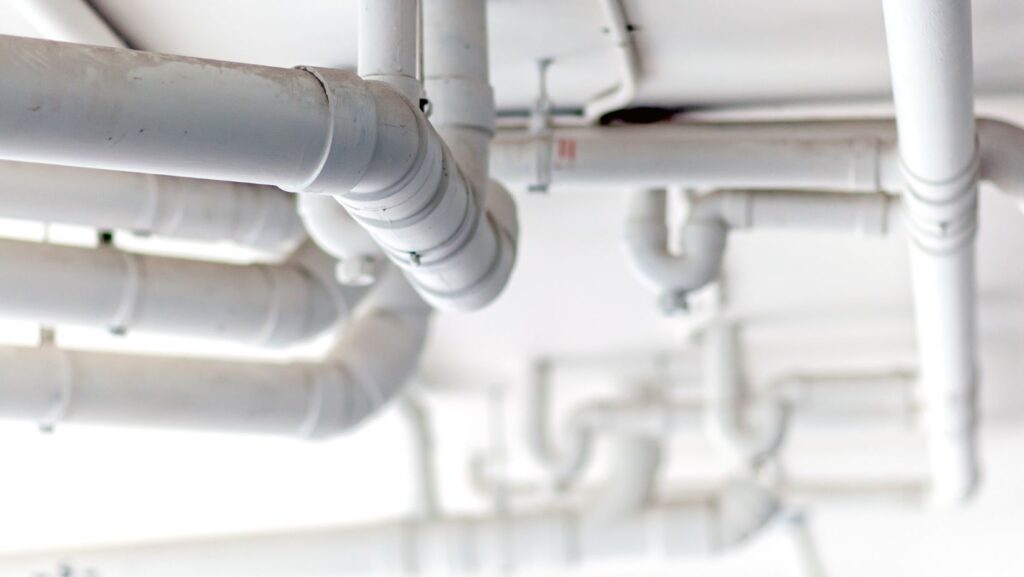At first glance, Poly B Plumbing seemed like the miracle solution modern homes needed—affordable, flexible, and easy to install. In the 1980s and early 1990s, it was embraced by builders across North America who believed it would revolutionize residential plumbing. But what was once seen as a cutting-edge innovation has turned into a homeowner’s nightmare. From unexpected leaks to full-blown pipe failures, Poly B Plumbing has earned a reputation for being unreliable and short-lived. This article explores why the life expectancy of Poly B pipes is far shorter than originally promised—and what homeowners need to know before costly damage strikes.
Life Expectancy of Poly B Pipes
In theory, Poly B pipes were expected to last. Unfortunately, reality has proven otherwise. Many homeowners have experienced pipe failures in as little as 10 to 15 years, with leaks, cracks, and complete pipe bursts becoming increasingly common as the pipes age.
The shortened lifespan can be attributed to several environmental and chemical factors that deteriorate the material faster than anticipated. Most experts today consider the practical life expectancy of Poly B pipes to be 15–20 years at best, with increasing risks of failure the older the system becomes.
Why Poly B Pipes Fail Prematurely

Chlorine Sensitivity
One of the most critical factors contributing to Poly B’s short life expectancy is its sensitivity to chlorine. Municipal water supplies often contain chlorine as a disinfectant, which gradually breaks down the molecular structure of polybutylene. Over time, this leads to brittleness, micro-cracking, and eventually large-scale failure.
Improper Installation
Poly B was widely installed during a time when awareness of best practices was limited. In many cases, pipes were not properly secured, kinked during installation, or connected with substandard fittings (especially acetal plastic fittings), all of which contributed to early degradation and leaks.
Ultraviolet (UV) Exposure
Although Poly B pipes were intended for indoor use, exposure to sunlight or even strong artificial light can significantly weaken them. UV light alters the chemical structure of polybutylene, making it more prone to failure. Any section of pipe exposed during or after construction could be compromised.
High Water Pressure
Homes with consistently high water pressure may also experience faster degradation of Poly B pipes. The material isn’t designed to withstand intense or fluctuating pressure over long periods. This accelerates the development of leaks and pipe bursts.
Insurance and Home Resale Challenges
Because of its poor track record, Poly B plumbing presents not only a maintenance concern but also an insurance and resale problem. Many insurance companies are reluctant to offer coverage for homes with Poly B pipes due to the high risk of water damage claims. Others may charge higher premiums or insist on complete pipe replacement before issuing a policy.
From a real estate perspective, Poly B can be a red flag. Home buyers and home inspectors often identify Poly B piping as a major issue, and many buyers will require a full replacement as a condition of sale.
What Homeowners Should Do
If you own a home built between 1978 and the mid-1990s, it’s wise to check whether Poly B was used in the plumbing system. Signs include flexible gray piping near the water heater or under sinks, or “PB2110” printed on the pipes.
Replacing Poly B piping with more durable materials like PEX (cross-linked polyethylene) or copper can drastically reduce the risk of leaks and increase your home’s value. Although repiping can be costly, it’s often a worthwhile investment when considering the long-term damage and insurance issues that Poly B may cause.
To Sum Up
While Poly B piping once promised an affordable plumbing solution, time has revealed its critical flaws. With a life expectancy far shorter than its alternatives and a tendency to fail without warning, it poses a serious risk to homeowners. Recognizing the signs early and planning for replacement can help you avoid costly water damage and preserve your home’s value and safety.


More Stories
The Time to Choose a Smart Toilet Is Actually Now
Triple Threat Slot Overview
Expert Waterproofing: The Key to Long-Term Structural Protection